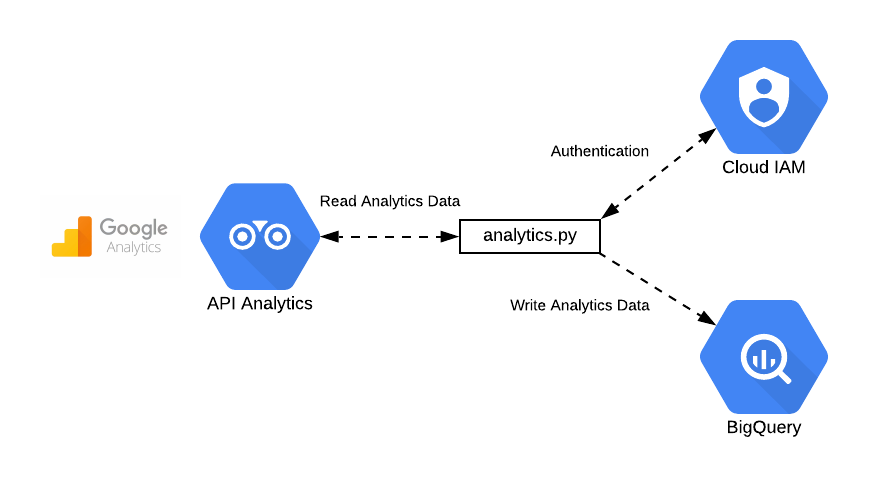
Managing conventional Enterprise Resource Planning (ERPs) systems’ maintenance and complexities can be a complex job. A high number of resources and time often tend to be over budget and delays. Also, the rigidity of off-the-shelf solutions and long coding cycles are the barriers to customization and adaptability.
Creating an ERP solution using a low-code or no-code platform can be the best bet for businesses. With prebuilt templates, intuitive interfaces, and drag-and-drop features, low-code ERP platforms smoothen the development process.
As per Statista, the worldwide low-code platform market achieved 32 billion USD in 2024. From the above data, we can understand the benefits of using low-code platforms in ERP development.
Top 5 challenges of traditional ERP systems
The days are gone when traditional ERP systems have been the backbone of organizational operations, integrating multiple business processes into business systems. However, with the evolution in technology and business environments, these traditional ERPs face lots of challenges that can interfere with adaptability and efficiency.
1. Complex Implementation and High Initial Costs
Implementing a conventional ERP system requires lots of investments, IT infrastructure, and hardware. Also, the implementation process of traditional ERPs is time-consuming and complex. It further needs extensive integration efforts and customization. All these factors can increase budget and time, making it a big challenge for businesses to recover their ROI.
2. Limited Remote Access and Accessibility
Traditional ERP systems are implemented within the organization and provide limited accessibility, especially for mobile or remote users. VPNs, or remote desktop solutions, are often required to access these systems remotely. It is a really cumbersome experience for modern users.
3. Less Scalability
Organizations are growing rapidly, and at the same time, so are their ERP needs. But, the prowess of traditional ERP systems is not sufficient to manage increased data volumes. Scaling systems with the demand is a significant need for an organization’s growth.
4. Resistance to Change and User Adoption
Indeed, implementing a new or upgrading the existing ERP system often requires changes in workflows and processes. Employees in an organization may resist these transformations due to unfamiliarity. It further leads to less adoption by users. This resistance creates a big challenge for organizations to change management.
5. Integration Difficulties
Integration with new technologies is still critical for traditional ERP systems. The lack of integration capabilities can limit organizations’ ability to enhance their decision-making processes and operations.
What Are Low-Code Extensions?
Low-code extensions are modular customizations or add-ons that enhance the functionality of low-code development platforms. These extensions help developers to add custom features and automate processes without complex and long coding. They allow quick deployment due to the plug-and-play feature of their platform-specific marketplaces.
Low-code extensions can include business logic modules, templates, UI elements, or connectors, making app development faster and more efficient. These extensions are useful for small teams or non-developers to create highly scalable solutions in less time. These tools also provide high flexibility and ease of maintenance.
Key Features of Low-Code Extensions
- Plug-and-Play Functionality
- Custom Integration
- Reusable Components
- Advanced Capabilities
- Marketplace Availability
What is a low-code ERP system?
A low-code ERP (Enterprise Resource Planning) system is a software platform developed using a low-code development platform. It helps businesses create, customize, and manage their ERP solutions with less or minimal coding.
A low-code ERP system doesn’t require extensive programming for customization. It offers features like prebuilt templates and drag-and-drop interfaces that make the development faster. These systems help businesses manage and automate their core business processes, such as inventory management, HR, Supply chain, etc.
Example
A production organization can use a low-code ERP platform to efficiently and quickly develop a dedicated and customized solution that integrates supply chain workflows with inventory management.
Using a low-code method enables businesses to configure their apps to automate reminders or notifications regarding low stocks, etc. After getting notifications on time, a company can easily synchronize and record this data for real-time budget analysis.
How do low-code ERPs work?
Low-code ERP systems work by using visual development environments to simplify the development, customization, and deployment of ERP solutions. Low-code ERPs help developers create workflows and apps using lots of configuration options and prebuilt components.
Using these platforms, users with limited technical expertise can design and modify ERP modules efficiently. These tools also support mobile accessibility, real-time analytics, and process automation.
Low-code ERP systems power up businesses to respond faster to market changes and implement updates quickly. Indeed, low-code tools are an attractive option for all business sizes seeking to get digital transformation in less effort, time, and cost.
Why Enterprises Use Low-Code ERPs?
According to KPMG 2024 reports, low-code adoption reflects a shift in management’s mindset toward digital transformation.
Of course, low-code ERPs have a huge impact on the digitization of SMEs. In order to meet rapid changes in technology and customers’ demands, businesses need to adopt agile and innovative solutions dedicated to their own business processes. The best solution to achieve this is – low-code ERP.
By using low-code platforms, even people who are only familiar with internal processes can easily create the ERP system independently. To do this, you don’t need to have programming skills. You only need to use drag-and-drop functionality to develop visuals as per your requirements.
This eliminates or minimizes the dependency on costly development resources. It helps enterprises to easily adapt to new and changing market conditions. Of course, low code has lots of advantages.
Moreover, low-code ERPs are more efficient in meeting modern industry requirements effectively and quickly. As per Gartner’s 2024 report, 65% of developments will be done through low-code. This is really helpful in meeting the challenges of the business world.
1. Boost Development and Deployment
Low-code platforms minimize the time required to build and implement ERP systems. According to Redhat, low-code development can reduce the app development time by up to 90%. This boost helps businesses to adapt to market changes and internal needs easily.
2. Cost Efficiency
A study revealed that more than 85% of organizations found low-code platforms highly effective in reducing the cost. Low-code tools do this by minimizing the need for coding and software development expertise.
3. Enhanced Flexibility and Scalability
Low-code extensions or tools provide higher flexibility to adapt modern ERP systems. Also, it can be done without any reconfiguration. This adaptability helps enterprises integrate new functionalities, scale their operations, and maintain a competitive edge.
Using Low-Code / No-Code Tools to Improve Their ERP Capabilities Faster
1. Improving Business Processes
Businesses use low-code platforms to automate and optimize business processes within their ERP systems. By creating custom applications and workflows, organizations can minimize manual tasks, enhance efficiency, and reduce errors. All these enhancements increase the productivity within the organization.
2. Enhanced User Experience
Low-code tools help create user-friendly interfaces for specific departments. Mobile apps, interactive forms, and custom dashboards can be developed easily to increase user engagement and adoption of the ERP system. This personalization tends to faster decision-making and better data accuracy.
3. Rapid Prototyping and Iterative Development
The vitality of low-code development allows businesses to add new features or modules quickly. This iterative approach helps continuous improvement as per user reviews and changing business requirements. It ensures that the ERP system evolves to meet your organizational goals.
4. Backing Compliance and Regulatory Requirements
Low-code extensions can be used to develop applications that ensure compliance with industry standards and regulations. For example, implementing data privacy controls, creating audit trails, or generating compliance reports can be achieved efficiently. It further reduces the risk of non-compliance.
5. Empowering Real-Time Analytics and Reporting
By integrating analytics capabilities through low-code platforms, enterprises can derive real-time insights from their ERP data. Data visualization, custom reports, and dashboard tools can be built to support strategic planning and informed decision-making.
6. Scaling Operations For Enhanced Functionality
With the business growth, their operational needs become more complex. Low-code extensions allow for the scalable extension of ERP functions, such as adding new modules for supply chain operations, inventory management, or customer service, without impacting the entire system.
7. Reducing Dependency on IT Departments
Of course, the integration of low or no-code extensions for ERP systems has a huge impact on modern business needs. By empowering a wide range of users, providing quick development, and enhancing flexibility, these platforms help organizations easily adapt to the latest business needs. With the rapid adaption of low-code solutions, enterprises can drive better innovation and maintain their existence in their relevant domain. By empowering business users to develop and deploy applications, low-code platforms increase the pressure on IT departments. This decentralization boosts innovation in enterprises and enables IT teams to focus on their core business activities and customization tasks.
Conclusion
Of course, the integration of low or no-code extensions for ERP systems has a huge impact on modern business needs. By empowering a wide range of users, providing quick development, and enhancing flexibility, these platforms help organizations easily adapt to the latest business needs. With the rapid adaption of low-code solutions, enterprises can drive better innovation and maintain their existence in their relevant domain. To know more, explore our innovative digital solutions or contact us directly.








